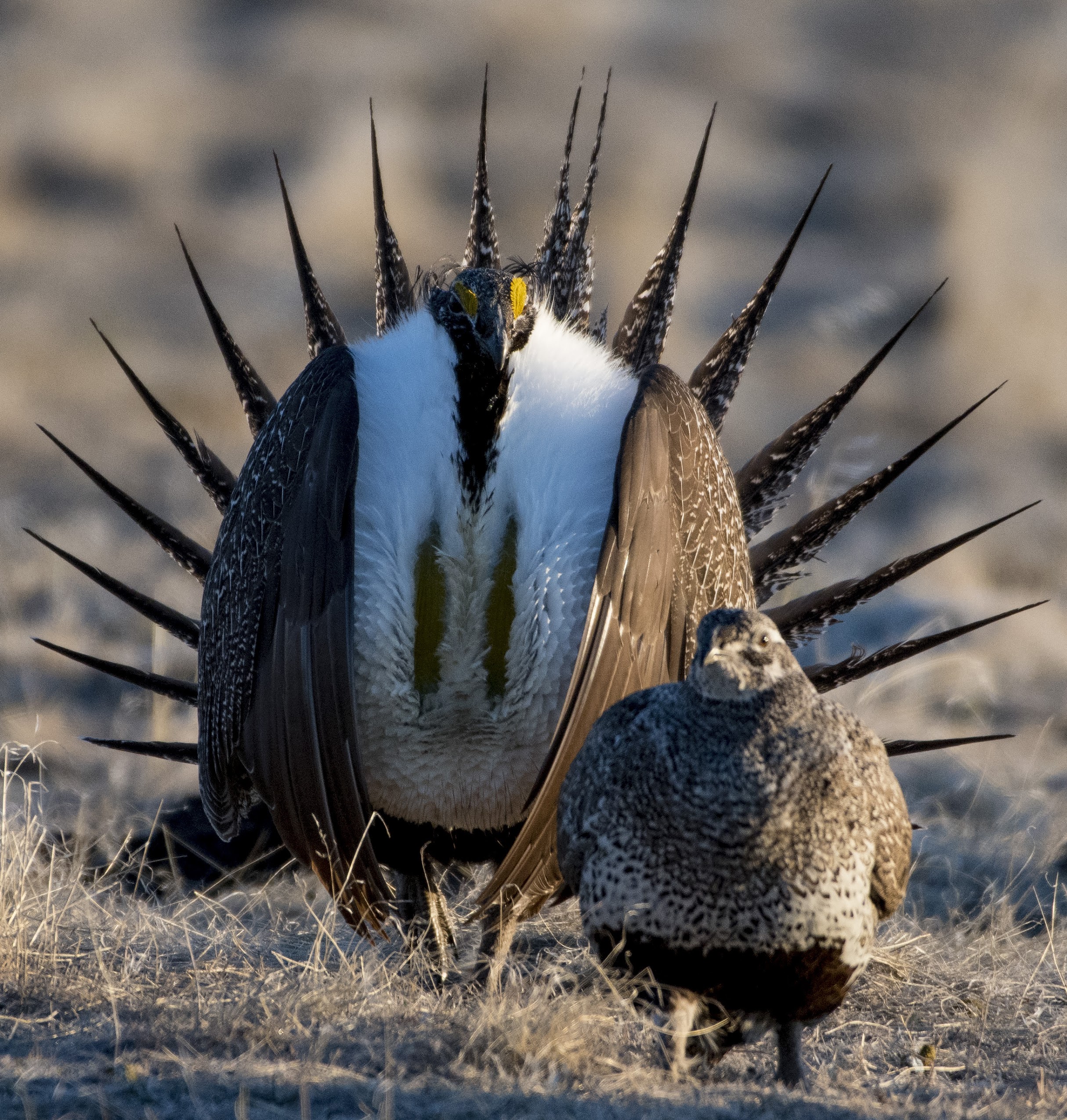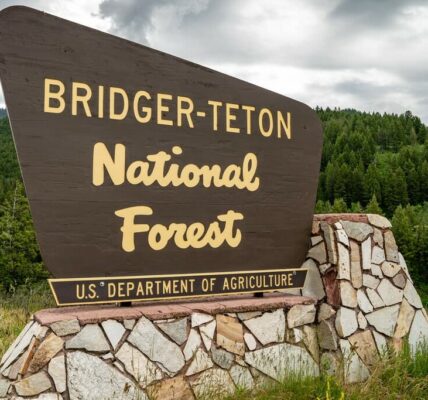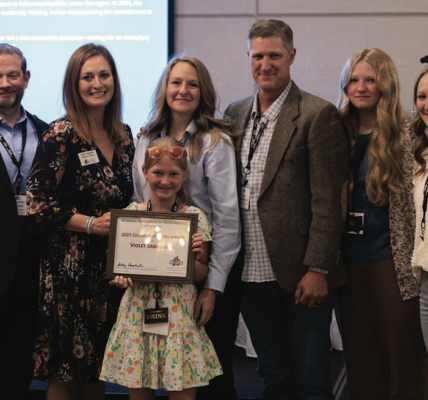
By Sarah Elmquist-Squires
Lander Journal
Via- Wyoming News Exchange
LANDER — For decades, federal and state land managers have used a method of mowing and applying herbicide to Wyoming big sagebrush as a way to improve habitat for greater sage-grouse. The theory is that the treatment will encourage the growth of grasses and broad-leaf flowering plants that are more nutritious, spur new growth of big sagebrush that has a higher protein content, and increase invertebrate populations – another sage-grouse food source.
But a nine-year study by Wyoming researchers suggests the funds and energy funneled into the mowing and herbicide treatment have no impact on sage-grouse – in fact, the data show a slight avoidance by sage-grouse to the treated areas.
The researchers monitored behavior and survival rates of more than 600 female greater sage-grouse in the study, along with effects on invertebrates, sagebrush and herbaceous vegetation. They found that, along with the sage-grouse, the invertebrates and herbaceous vegetation also didn’t respond well to the treatment.
“It didn’t increase or decrease survival of nests, broods, or adult-stage sage-grouse,” explained Jeff Beck, University of Wyoming professor of ecosystem science and management and principal investigator for the study, adding that sage-grouse tended to avoid the treated areas. “So they basically lost some habitat. It wasn’t functional for sage-grouse after the treatment.”
Beck explained that the idea that promoting younger sagebrush growth with a higher protein composition didn’t really pay off either. In a companion study, they found the younger growth did have about 1% more protein compared to untreated sagebrush, but because there was so much less of it, it didn’t result in much of a benefit for sage-grouse.
In that study, Beck and his colleagues also found that chemicals in sagebrush that influence dietary selection by sage-grouse and other herbivores did not differ between treated and untreated sagebrush.
Researchers collected pre-treatment data between 2011 and 2013, then conducted mowing and the application of the herbicide tebuthiuron in winter and spring 2014 on land near Jeffrey City. They then monitored the treated areas from 2014 to 2019; throughout the study, they compared data to untreated plots near the treatment area along with off-site control plots. Their research was compiled into a paper that was recently published in “Wildlife Monograph.”
Beck shared data from another paper, published in 2018, that showed how widespread this treatment is used as a conservation practice by land managers. Researchers examined where the treatment was used in core sage-grouse areas in management zone two – central and western Wyoming – determining approximately 3% of the area had been treated between 1994 and 2012. It amounted to 1,511 square kilometers.
“So that’s fairly substantial,” Beck said.
Beck pointed to another study conducted within their study area that examined the impact the mow-and-treat practice had on sagebrush song birds, such as the brewer’s sparrow, which determined they wouldn’t nest in treated areas.
“So there are other species to consider,” he added.
Beck and his colleagues hope that the data from their study will be used to help guide conservation efforts by land managers in the future.
“We’re hoping that our results will give managers the idea that these particular techniques in Wyoming big sagebrush are not beneficial to sage-grouse. So if you want to spend money and effort, you need to look at other options,” he said. “There are other options that seem to work much better.”
They recommend the resources being tapped for mowing and herbicide treatment operations be diverted to other practices that do show promise for helping greater sage-grouse and other species in sagebrush habitat, such as removing encroaching pinyon and juniper and invasive species like cheatgrass.
“There’s all kinds of things that can be done for sage-grouse other than mowing or [applying herbicides],” Beck explained.
Another conservation practice he suggested that could benefit sage-grouse is enhancing wet areas in sagebrush habitat, as well.
Why sage-grouse?
Beck said the species is a sagebrush “obligate,” meaning they depend on sagebrush for each life stage. They migrate and require a fairly large land area to thrive; the record recorded migration was a female who traveled around 150 miles in Montana.
“They tend to move around a lot, and because of that, they’ve been considered an umbrella species for other species that live in that same habitat,” Beck explained. “They’re so tied to the sagebrush that if we can evaluate their health, it can give an indication of how healthy that whole system is to other species … even a lot of big-game species, pronghorn, elk.
“We kind of see the sage-grouse really as the canary in the coal mine,” Beck noted. “If the sage-grouse population is declining, that probably means the habitat isn’t in good condition and other species are declining.”
Greater sage-grouse have been proposed for listing as an endangered species several times, but in 2015 were categorized by the U.S. Fish and Wildlife Service as no longer warranted for the list. About 70% of the state includes sage-grouse habitat, with about 24% of the state currently listed as a core area for the species.
The research was supported by the Wyoming Game and Fish Department’s Wyoming Sage-grouse Conservation Fund; the Bates Hole, Big Horn Basin, South-Central, Southwest and Wind River/Sweetwater River local sage-grouse working groups; the Wyoming Wildlife and Natural Resource Trust; the BLM’s Lander field office; the Margaret and Sam Kelly Ornithological Research Fund; and the Wyoming Reclamation and Restoration Center’s graduate assistantship program.
Beck’s co-authors include Kurt Smith, a former UW Ph.D. student who is now an ecologist with Western EcoSystems Technology; Jason LeVan, a former UW M.S. student who is now a range and wildlife conservationist for Pheasants Forever; Anna Chalfoun, UW associate professor and assistant unit leader of the U.S. Geological Survey Wyoming Cooperative Fish and Wildlife Research Unit; Stanley Harter, a wildlife biologist with the Wyoming Game and Fish Department; Thomas Christiansen, a retired Wyoming Game and Fish Department sage-grouse program coordinator; and Sue Oberlie, a retired Bureau of Land Management wildlife biologist.





